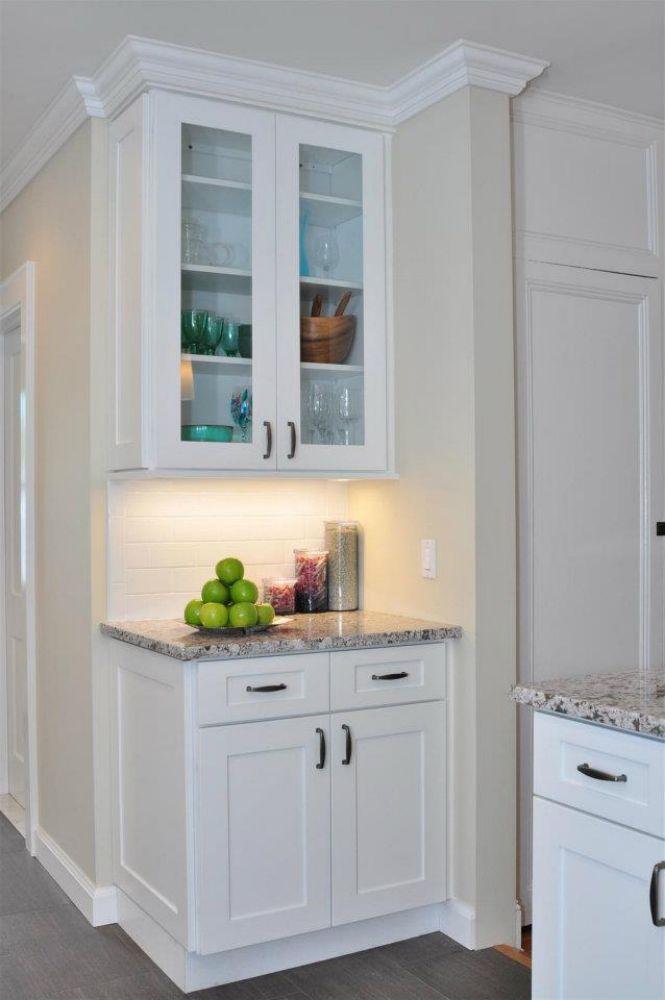Creating a healthy home environment begins with the choices made in design materials, especially when it comes to cabinetry. Among the many finishes available today, Forevermark Nova Light Grey stands out not just for its stunning appearance but also for its commitment to indoor air safety. Homeowners are becoming increasingly conscious of how materials affect air quality, and choosing low-VOC cabinetry plays a major role in building an environmentally safe living space. This article explores how this finish contributes to healthier interiors, its certification standards, and what makes it a responsible choice for modern kitchens.
Understanding VOCs and Their Impact on Indoor Air Quality
Volatile Organic Compounds (VOCs) are chemicals that easily evaporate into the air at room temperature. They are commonly found in paints, adhesives, sealants, and finishes. Over time, these emissions can contribute to poor indoor air quality and cause irritation or health concerns. That’s why low-VOC or no-VOC products are now preferred by both homeowners and interior designers seeking a safe and eco-conscious home.
When it comes to kitchen cabinetry, low-VOC finishes mean fewer harmful fumes released during installation and use. For households where air purity is a concern—especially those with children, elderly residents, or pets—choosing low-VOC cabinetry is essential for maintaining a clean, breathable indoor atmosphere.
What Makes Forevermark Nova Light Grey a Low-VOC Choice
The Forevermark Nova Light Grey finish is manufactured with care for both aesthetics and environmental health. The finish uses waterborne coatings and modern sealing methods that significantly limit the release of volatile compounds. This careful production ensures that homeowners can enjoy the contemporary beauty of the Nova Light Grey tone without compromising their home’s air quality.
In addition, the materials used in these cabinets undergo rigorous testing for compliance with environmental and safety standards. These certifications confirm that emissions from the product meet or exceed guidelines for low chemical release. The result is a cabinet system that looks elegant, performs reliably, and supports healthier living.
The Environmental Certifications Behind Forevermark Nova Light Grey
One of the most reliable indicators of a safe cabinetry product is its certification status. Cabinets like Forevermark Nova Light Grey are produced in facilities that follow strict quality assurance processes, ensuring that formaldehyde emissions are minimal and compliant with recognized standards.
These standards often include CARB2 compliance, which governs limits on formaldehyde emissions in wood products, and other eco-friendly design benchmarks that aim to safeguard indoor air quality. Through responsible sourcing and finishing techniques, these cabinets achieve a balance between durability, design, and environmental protection.
Benefits of Choosing Low-VOC Cabinetry for Your Kitchen
Low-VOC cabinetry brings multiple advantages beyond aesthetics. For one, it reduces the risk of lingering odors or fumes after installation, making it safe for immediate use. It also contributes to better long-term air circulation and reduces allergens in enclosed spaces like kitchens.
Moreover, low-VOC materials are often paired with sustainable construction practices, meaning that your cabinetry is not only safer for your home but also for the planet. The Forevermark Nova Light Grey finish demonstrates this commitment through a combination of eco-conscious manufacturing and a refined color palette that complements modern design preferences.
Design Harmony and Health: A Combined Benefit
Choosing materials like Forevermark Nova Light Grey gives homeowners the unique advantage of blending visual appeal with environmental responsibility. The light grey hue embodies balance, making it suitable for both minimalistic and traditional kitchen spaces. At the same time, its low-VOC composition ensures that while your kitchen looks inviting, it remains free from harmful emissions that can compromise air quality.
By selecting cabinetry that supports indoor wellness, you create an atmosphere where design and health coexist seamlessly. This synergy is increasingly valued in sustainable home design, where aesthetics are enhanced by mindful material selection.
How Proper Installation Supports Air Quality
Even when cabinetry is made with low-VOC materials, proper installation plays a vital role in maintaining air quality. Using eco-safe adhesives and minimizing unnecessary sealants can help ensure that the benefits of low-VOC finishes are preserved. Homeowners are encouraged to ventilate the kitchen during installation and curing periods, allowing any minor emissions to dissipate quickly.
Furthermore, partnering with professionals who understand sustainable construction practices ensures that your Forevermark Nova Light Grey cabinets are handled with the care they deserve. The result is a kitchen that’s as healthy as it is beautiful.
Long-Term Health and Sustainability Advantages
Low-VOC cabinetry is more than a design trend—it’s a long-term investment in health. Continuous exposure to poor indoor air can affect respiratory comfort, sleep quality, and overall wellness. By opting for cabinetry like Forevermark Nova Light Grey, you’re choosing a solution that minimizes exposure to airborne irritants and supports a sustainable, responsible home design model.
These advantages extend beyond immediate air safety, reflecting a larger commitment to eco-friendly living and responsible consumer choices. Over time, such materials contribute to a reduced environmental footprint and promote well-being for everyone in the household.
Why Choose Us?
At My Kitchen Cabinets, our mission is to provide homeowners with cabinetry that blends craftsmanship, design, and environmental integrity. We believe that your kitchen should be both beautiful and safe, and that’s why we offer a range of products like Forevermark Nova Light Grey, known for their low-VOC finishes and superior quality.
Our commitment to sustainability goes beyond the surface. Each cabinet is carefully inspected for performance, precision, and eco-compliance, ensuring that your home receives only the best. With us, you gain access to expert guidance, dependable products, and timeless designs that stand the test of time while supporting a healthy indoor atmosphere.
Conclusion
When choosing cabinetry, beauty should never come at the cost of health. The Forevermark Nova Light Grey collection proves that it’s possible to achieve both visual refinement and environmental safety. Through low-VOC finishes, sustainable practices, and thoughtful craftsmanship, these cabinets represent the future of conscious design. Whether you’re remodeling your kitchen or building a new home, investing in low-emission materials ensures a space that’s as breathable as it is beautiful.
Your kitchen is the heart of your home—and with the right cabinetry, it can also be a haven of health and harmony.
Frequently Asked Questions
Q: Is Forevermark Nova Light Grey low-VOC and safe for indoor air quality?
A: Yes. The finish is designed with low-VOC coatings that significantly reduce chemical emissions, promoting cleaner indoor air and a healthier living space.
Q: What are the benefits of low-VOC cabinetry?
A: Low-VOC cabinetry reduces exposure to harmful chemicals, prevents lingering odors, and contributes to improved respiratory comfort, especially in enclosed spaces like kitchens.
Q: Does Forevermark Nova Light Grey meet environmental certifications?
A: Yes. It is manufactured under strict compliance standards that meet recognized environmental safety guidelines, including low formaldehyde emissions.
Q: How can I maintain the air quality after installing these cabinets?
A: Ensure proper ventilation during installation, use eco-safe adhesives, and regularly clean with non-toxic products to maintain the best air quality over time.
Q: Why is low-VOC cabinetry important for families and pets?
A: Low-VOC materials minimize airborne irritants and toxins, making your kitchen safer for children, older adults, and pets, all of whom are more sensitive to indoor pollutants.

